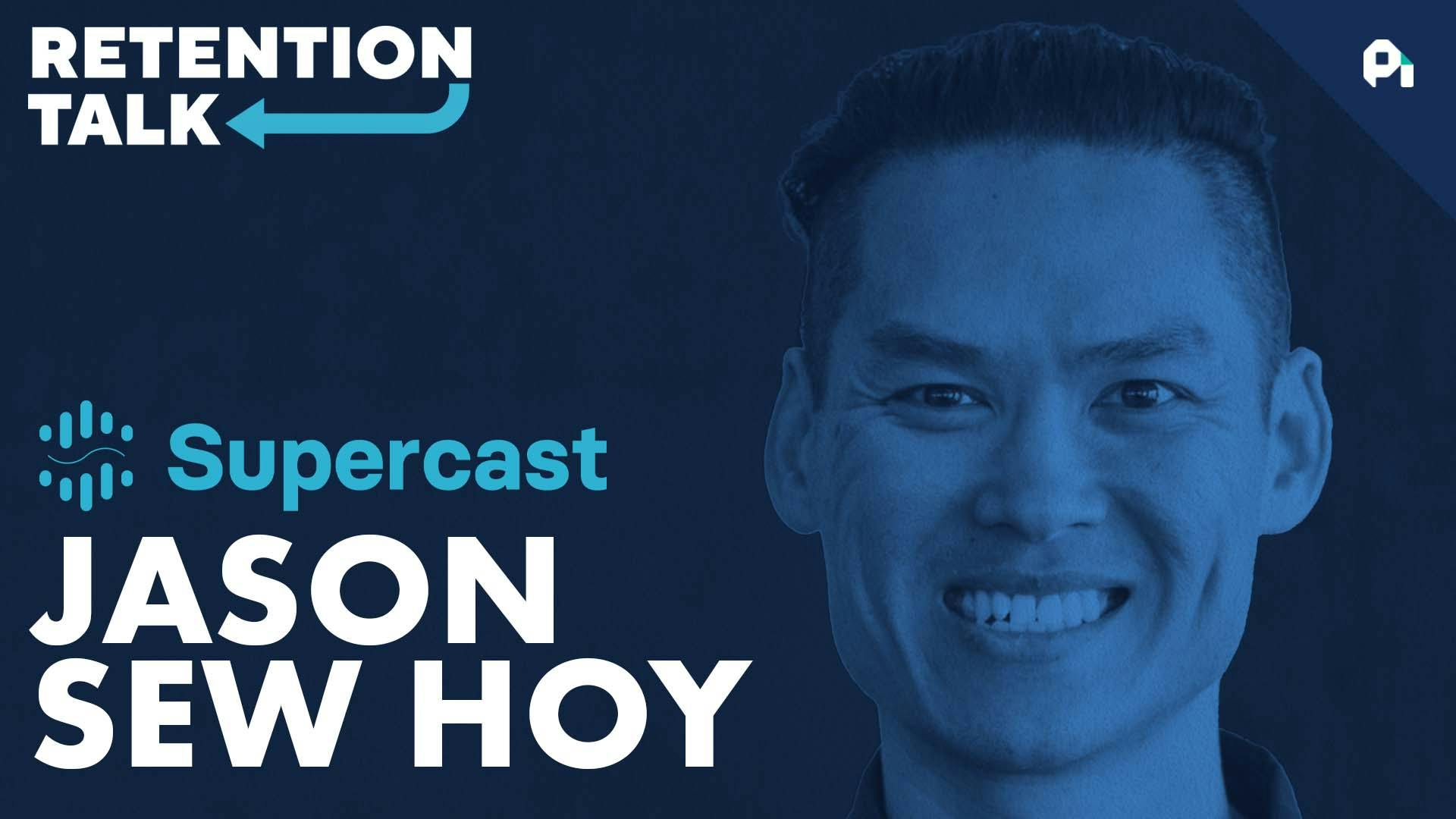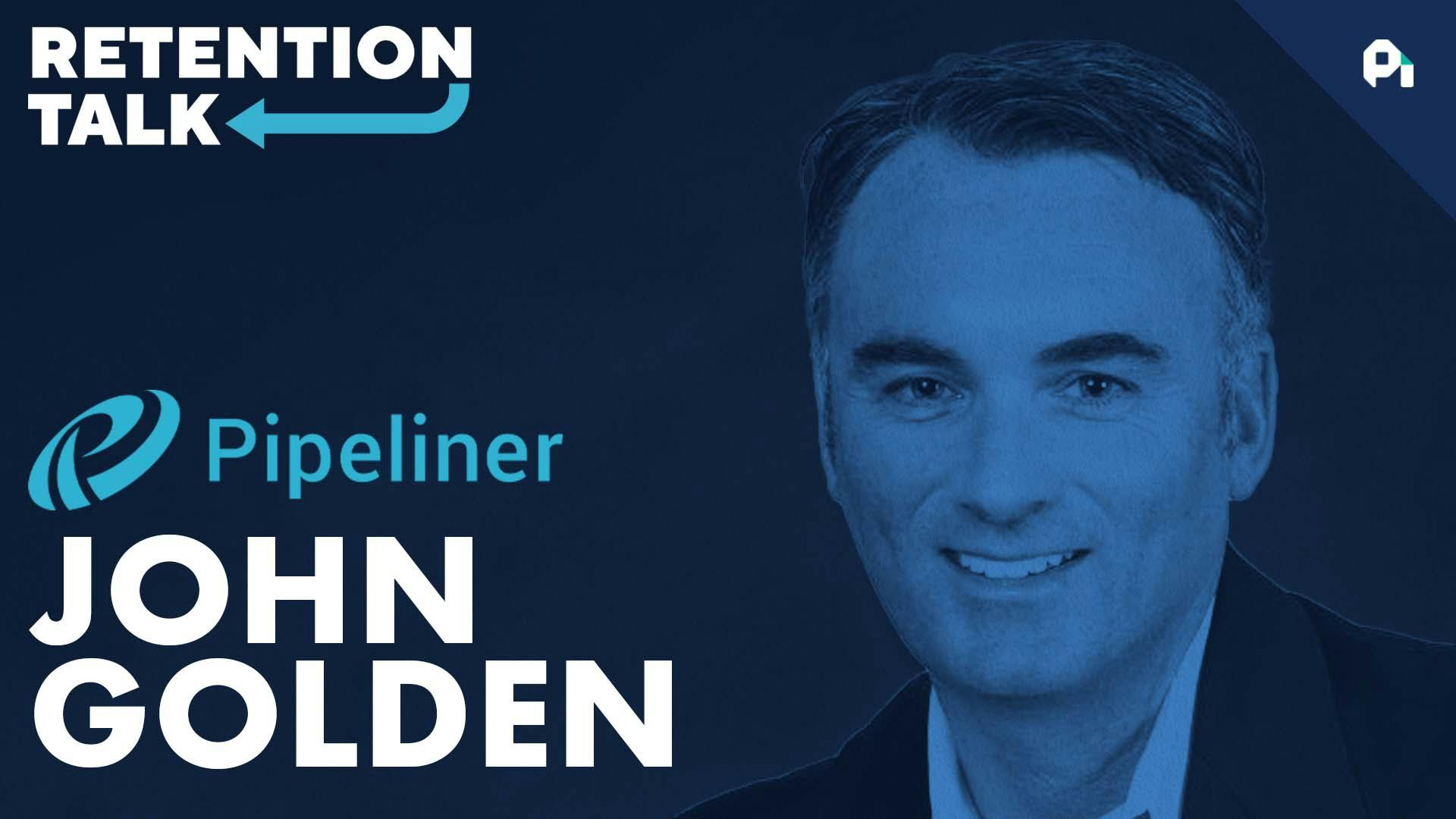
Integrating ecosystems, forecasting churn, and onboarding | Beatport's Romain Pouillon
This episode might reference ProfitWell and ProfitWell Recur, which following the acquisition by Paddle is now Paddle Studios. Some information may be out of date.
Please message us at studios@paddle.com if you have any questions or comments!
How often do you listen to music? Most of us probably listen on a commute, while at work, or when exercising to name a few. For some, music is ingrained in what we do. In the case of Romain Pouillon, SVP & GM at Beatport, he’s focused on how much customers curate playlists and engage with their software. These usage metrics are key leading indicators of positive or negative retention.
On today’s episode of Retention Talk, I talk with Romain about his experience at Beatport, including being integrated with your customer’s ecosystem, using segmentation to forecast churn by cohort, and retention beginning with onboarding.
Key points discussed in the episode
The prediction of churn is an important component to understand and to prevent people to leave the platform.” – Romain Pouillon
Integrating with your customer’s ecosystem
When Beatport launched their product Link, they only integrated with one platform: Rekordbox. What they soon realized, however, is that users were not too keen on shifting platforms that were more commoditized like Serato, Pioneer, and Traktor. By forcing their users to use only one software, it was not easy to retain customers who had already built out systems on other platforms. This led them to adopt up to 15 different platforms that Link integrates with, shoring up faith in the Beatport product.
Using segmentation to forecast churn by cohort
Romain elucidates that by segmenting Beatport’s customers by the kind of music they consume, they were able to determine when these different groups would churn. They learned that using a broad retention tactic for all customers is not as effective as a calculated win-back campaign for individual segments. They noticed usage dropped by streaming fewer and fewer tracks on Link, which made it clear a dedicated email to re-engage with the platform was needed.
Retention starts with onboarding
Before retaining a customer, you have to instill the value that your product provides. At first, retention will seem to be all over the map, but this is no cause to panic. Over time, as you improve your product and correspond it to the needs of your customers, numbers will naturally start to normalize. The best thing you can do upfront is ensure your onboarding is in a good place. Check in with your team weekly and ensure that the tweaks, large or small, are affecting the numbers you're tracking.
Take Action:
You don’t need a lot to optimize your customer success strategy, but it should be a company-wide focus. The relationship with your customer is at the core of recurring revenue. Cementing these relationships has an immensely positive impact on your bottom line.
Here are 7 steps for creating your customer success strategy:
1. Identify target personas
You won’t know how to provide the best possible experience if you don’t understand your target customer. Buyer personas help you qualify the best-fit customers for your product and figure out how to attract them to your service. It’s impossible to make someone successful if you don’t understand their goals.
2. Talk to current customers
Your current customers are some of the most valuable assets you have. They can provide you with real-time customer feedback on your product, its value, and how it helps them be successful. Talking to current customers is also a great way to find social proof to share with prospects to help them convert.
Try using chat pop-ups, automated email campaigns, and proactive outreach to survey your current customer base about their needs.
3. Map out multiple customer journeys
Each target persona should have its own customer journey. Once you understand who your customers are, who you want to attract, and how to convert them, it’s time to map out the journey that gets them there. Build this journey based on customer feedback as well as the goals of each customer.
Start small. If you understand the basic journey a customer follows from discovering your product to purchasing it to finally becoming a loyal user, that will help you build a better experience as a whole.
4. Optimize your onboarding journey
Getting used to a new product or service is never easy. Make sure your onboarding journey is optimized to provide the most value possible at each customer touchpoint. Use customer surveys and conversations you’ve had to figure out where to focus. The easier it is to get acclimated to a new tool, the better off customers will be in the long term.
5. Define what success looks like for each persona
What actions does a new customer need to take to achieve their goals using your service? Make sure you define exactly what outcomes are beneficial for each target persona, and then incorporate them into your customer success strategy. Learn more about building holistic personas in this post about customer research.
6. Pick metrics that reflect those outcomes
How do you quantify a customer’s success? It’s important to nail down the metrics you need to use to map out exactly how much customer success impacts your bottom line. Whether it’s retention and churn rates, new MRR, or LTV—make sure you can analyze the success of your strategy effectively.
If you’re not sure which metrics make the most sense, track how each metric changes as you implement your customer success strategy. Sometimes making an impact on your onboarding will help you increase LTV, other times it may cut down on churn rates.
7. Use customer success software to augment your strategy
There are a number of different tools you can use to facilitate customer success. Here are a few to help you get started with your search:
- Intercom: Their platform provides live customer chat, so you can connect with customers as they use your product/service.
- Zendesk: An all-in-one suite for customer management, customer service, and sales.
- Gainsight: This tool helps you track success metrics (like churn rate and LTV) to see whether your customer success strategy is working.
Do us a favor?
Part of the way we measure success is by seeing if our content is shareable. If you got value from this episode and write up, we'd appreciate a share on Twitter or LinkedIn.
New by campaign, you would also them like, oh yeah, here are two models for you. You know, depending on how long you have been a customer with us just to try to get you back, but I think it's already too late.
So the prediction of the churn is an important component that's going to become an important component to understand and to prevent people to leave the platform. Welcome to retention talk. I'm Neil ISSI, and we're talking to the best minds in the world of product and customer success to bring you actionable strategies on reducing churn and boosting retention
. This week, we're talking to Ramon Pouyanne, a senior vice president and general manager at Beatport. In the episode, we talk about the importance of being integrated with your customers ecosystem, using segmentation to forecast churn by cohort and pay careful attention to what Ramon has to say about onboarding.
Let's dove in. Roman, thanks so much for being here. I really accept the chat and learn more about board sort of approach, the retention and and all of the things that you guys do to sort of, you know, reduce churn and make sure your customers get value.
So the first thing I'm curious about is how did you end up here and how did you get into focusing on retention and churn? Like, tell me you tell me your story in a super high level, yes, or at a subscription is quite new for us.
We started two years ago, back in 2000 1918, and we started with hype, which was the subscription service. I would say B2B for labels. This one, in terms of retention, was easier to retain because we had customers which were professional and they needed the service.
And then we went to a more customer facing because is a company which is a platform so which focus on the on deejays, which is for the deejay community. And so we launched two years ago. It's going to be one week.
It's two years ago that we launched Link at the beginning of league and we didn't have so much integration. So maybe I can explain you what is people take beatboxing is kind of a streaming service, but for deejays and being a streaming service for deejays, it means that you have to be integrated in software and digital software
platforms like recalled bulks from Pioneer or Serato or Tractor, to name a few. And in these parts, some people deejays would like to access their music directly their music collection. And so when we started with Link, we only had one platform.
It was a record box. And so the users were like, Yeah, I'm not using record books. We started even with Deejay, which is the mobile app. And then we quickly added to record books. But people using chalk to Serato or digital format or origin or virtual deejay?
Well, I can. I can not use your platform. I don't want to move my entire system and the DJ equipment to your platform. So it has been a challenge for us to integrate with a maximum of platform in the minimum amount of time.
And two years later, I can tell you that we are we are integrating with all the main platforms. The last one to date being Troxel, and that's represents 15 plus platforms. So to come back to your question, at the beginning, we have a lot of churn right before we are trying, trying to beat this record box and
dropping directly. So the first thing we ought to provide to our customers was a full integration within all the main software platform, but also having an ecosystem which they would start to invest time in for music service. It's key that the users start to create playlist statue put effort into the platform because as soon as they put
effort into the platform, then they are likely to remain or to sustain you because they have spent hours curating their music, organizing their music collection within the Ring subscription. And if you add more and more platform, you have more and more customers joining.
But then we also added a digital web app, which is kind of an incarnation of the default style for those who are deejays, but to super, super accessible one. So that means you can access it from Chrome. You type in the URL digital people dot com, you log in with your subscription and from then you can and
quickly test the tracks and have access to all of this content. And in the next few weeks, we are going to launch the mobile app, which is also a dedicated mobile app for link subscribers so people could to read and listen to music on the go.
So what we are trying to do is a complete ecosystem where the user is constantly using it and putting it sort into a system. And the more playlists they have, the more music they are, the more likely they gonna stay with you.
So for me, that's really the basis of the retention here is to have something where people are really reliable and I think everybody may have the Apple Music and Spotify subscription. It's very difficult if you are into music to to leave this platform because you don't want to leave and to left all the playlist you have curated
behind you. Got it. No, that makes that makes a ton of sense. And I didn't realize how new your subscription product was. So I'm sure there's been a lot of learnings as you guys have sort of added the subscription functionality on top of the legacy product.
So you mentioned at the onset there was quite a bit of churn that you guys saw. Walk me through your process for understanding, you know, why your customers were turning and ultimately how you addressed, you know what you found.
I believe our users are turning now platform of choice was not supported yet. And then for those who were kind of using recalled books, luckily for us, we didn't see so many chance, so we knew that we had a good product because people would stick to it.
There is something where I think a common mistake is to increase the free trial period. So we are throwing one wants and you saw a lot of music service offerings two to three months. And what we have seen is that offering a longer time if the user doesn't engage with your product after a month, I don't think
it's execution, though you should try to cut your expenses, not when you're interested. And I sing, a lot of companies are kind of wasting effort and money on on the offering free trial. I think one mode seems to us as a music company enough to engage the users.
What we didn't have as a beginning is this onboarding suite. And also we didn't even have a regular weekly matter where you recommend to the people which music they could listen to. So what we have done is we have segmented our customer base depending on the test, on what the play are most and then targeting them with
a recommendation which is generated based on the data. So for example, if you are a deejay who likes drum and bass, then we would send you German based recommendations so you continue to use the platform right? So you continue to invest and to check the platform and to put effort into the subscription.
Everything is centered around that, and you spend a lot of time on the recommendation side of things. So we recommend you really keep tracks which get you hooked up, right, which makes you wanting to use the platform. I think being a DJ myself, I'm also label owner and promoter, which these days we can't wait as a promoter
, we can't wait as promoters, so we can't wait to follow live events to restart in Europe. I know in California it's restarting, so that's that's great to see. But the mindset is exactly that. You don't send trans tracks to a German based deejay.
He would be all funded and you would consider that you don't understand him and your brand is completely off topic. So it was really important for us to have a protocol segmentation. So we segmented our users by, you know, how those technologies are and based on the main dials.
And then we even went a little further, I would say, or level double in terms of sub segmenting, depending on the music, the consumer rights of music that portrays all the music they play on link. So what we are looking at is to even predict when you're going to chill based on your music consumption.
So, you know, normally every month you stream 100 tracks or you you stream, let's say, two or three hours, and then we see that these vaults, you only stream certain minutes. So it's dropping. And then the months after, it's also 30 minutes where like, OK, this person or this user might be at risk to live link.
So what we do is we start to address you and to send you some dedicated email to reengage you with the platform. So the churn prediction, it's something we are putting in place now, which would allow us to even prevent people to churn because of course, when they churn, we have the kind of what we call the
Wind Back Strategy or campaign, which is on cooldown. We ask you why you left first. So to understand what's not good with our product or what we should improve, and that doesn't help us in the beginning, by the way, to say OK, people once uploaded to be tracked ought to be integrated.
So we knew what people were chanting and we were not freaking out because we knew it was not helpful. It was just a question of time before we get integrated into the track to which is software. But usually by company would also them like, Oh yeah, here are two modes for you.
You know, depending on how long you have been a customer with us just to try to get you back, but I think it's already too late. So the prediction of the churn is an important component that is going to become an important component to those components or to understand and to prevent people to leave the pretzel.
I'm super curious about two things on this that I want to unpack. first is churn prediction. Models are terrific, right? If they work well and if the inputs are good, right? So like curious, you talked a little bit about segmentation based on.
Usage and certain activation metrics. What are you guys ultimately trying to do with the folks that aren't that active, right? Is it just, hey, keep using the product? Is it something else? Like what action do you hope they take and how do you guys measure that over time with the products, the churn prediction model?
We're not going to target people who are kind of dormant and pain because I think these people don't realize they are paying the subscription. And I'm sorry to say it, but business way it doesn't make sense to spend their thoughts on people who completely forgot about that subscription and to reactivate them.
So we have to be to be smart and understanding, whoa, we should prevent to churn. And so we have been smart enough to say, OK, this user, the first two months he was in and then, you know, it's like six months.
He didn't touch it, but it's still pain. So why should we do anything, though, as long as he's paying? And so those one we we want really we are into the tactics, but those one we want, we want, we are reactive them because it's simply a dumb one subscription and you don't want to activate or to reach
out. And then these people that I'm not using, that's I'm going against it right away and it represents a fraction of our customer base because as I said, it's a subscription. It's quite expensive. You know, it's not a five dollar one, it's rather $15, $30 and up to $45 a month.
So it's a kind of subscription, you know what you are paying for and you know you want it. So we we have a few percent which we we let dormant, right? It's based on the average right on the average time this spans the play.
And if we see that they start to deviate from their usual pattern, that's where we reach out. You know, we are learning as we go with this prediction model. No, that makes a ton of sense, right? You sort of leave this leverage alone and try to get folks that are sort of somewhat active into becoming more active
through nudges and sort of emails and whatnot. The flip side of that is so you also mentioned you guys have sort of a survey right through the cancelation flow to sort of learn more about why the customer is turning.
So one based on their response. Does anything happen? Do they get certain offers or do you guys try to save them at that time and to who synthesizes the results and and ultimately who takes action on, on, on, you know, patterns over time.
So we have a business analytics department and they kind of monitor and tweak the algorithm based on what they see right and about to win back. We are still experiencing what would work the best because, you know, offering two months for free.
Yes, that will be on board. But then they would drop immediately after the tumult. So you have these two months to kind of reactivate them by sending them again recommendations and link playlists, you know, every week with some special exclusive link playlist.
But win back. As I said, for me, it's already too late and preventing the churn rate is a key. Who's in charge of taking action on that? Yeah, yeah. So that's a business analytics department and we we kind of have weekly meetings where we discuss what's going on with our calls.
Now, I love that you'd be surprised how many teams just let customers churn without learning anything, right? And you know, obviously it sucks that the customer is turning, but hopefully you can leverage those insights to to improve the product or change something moving forward.
So sounds, it sounds like, you know, the team has a very sort of proactive or to your point, right. Taking a proactive approach to reducing churn is one that's more effective, right? What's something that you know you guys struggled with early on, but but really, you know, have overcome through through doing this, I think the product was
incomplete when when we launched and it took time for us to add the features because we are working with a lot of partners. So when we say ten to 15 integrations, ten to 15 partners to work with, to make sure that integrate the product in the way you want.
So the challenge for us, I think, has been more on the product feature side of things. And that's why two years later, I can see that we have almost completed our ecosystem, but we have some tweaks on the way to retain better customer.
So, for example, something I would have never imagined is that we, you know, when you go on beatbox dotcom, you have two minutes previews for each track. And what we did, waiting for all the platforms to be enabled in the early days, six months to one year after we launched, we are folding suits quite well.
The possibility to stream down to your truck on the Big Apple Store, right, so that us allowed us to retain more people to the platform, even if their platform or their truck door, you know, have their digital software of choice were not yet available.
So I would say it was more on the feature set. It took time for this product to to really be convincing, called The Usos. But don't get me wrong, I mean, it's its users, which would have record books.
Most of them stick with us sense. Something we have done is analyzing our courts or by mods, for example, people who onboarded in July last year. You can see our menu remains right in August and then in September.
Also, you have this gigantic diagram where you see all your cohorts are churning or not and doing that pull, plug and spell product like Alto's tremendous the first to be better at our projections and the future, right? Because I can tell you, for example, what's what's our goal in terms of churn rate?
Because as we completed the system, I think initially we had the 18% churn rate when the customer always been, of course, from free to paying. It's rather, I think we lose between 30 and 40% of them, right? So we have a 60 70% retention rate.
And then when they are paid at the beginning it was 18%, it went down to 14. Nowadays we might be at 1012 and our goal is to go up to eight, which I think are pretty good for a subscription product.
I don't know if you have any reference on your site would be curious to know if those goods churn rates. The short answer is yes, right? We have. So just for context, Praful has about 25,000 subscription companies plugged in to their billing system, so we're able to generate a lot of benchmarks and data around, you know, what's
a good churn rate? What do you see based on RPO and things like that? And you can sort of compare your data against others in your industry. So a 3% churn rate depending on your demographic, especially for a consumer product, is actually pretty good, right?
And then when you break down that 3% into voluntary delinquent churn, you start to see some new ones there. I'm happy to share some data offline, you know, around some of these things, if that's something you guys are curious about.
Oh, yeah, definitively. But I was mentioning 8% is our target. I don't think we can go to three. Oh, gotcha. Gotcha. Sorry. I'm sorry. It's so, so 8%. Yeah, totally so. 8% based on your ARPU is decent right now, especially given given the volatility of the use case is pretty good.
Now, having said that, we have seen consumer subscriptions even in the music industry that are a little bit lower right in the in the four to five range. Do the other tactics like, you know, I'm not sure if you guys have explored longer term links, so perhaps offering up on an annual subscription instead of a monthly plan
or a six month subscription. So a monthly plan to sort of lock people in. And then there's probably also in your business, a ton of mechanical areas around, you know, credit cards and things like that as well that you could probably optimize for, you know, even further.
So I think 80% is a pretty good start. But but there's obviously probably room for improvement around some of the some of the mechanical things that that, you know, drive churn as well. Yeah, we were looking into six months and on your chance or we annual subscription.
So that's that's going to come online later this year as well. Because what's funny is like, you know, when you look at the data churn on annuals and six month months is way lower because not only is a user, you know, locked into a longer term length, but you're swiping their card a lot less too.
So there's a lot less delinquencies as well. So something to think about. And again, we like this the data that we study all day. So I'm happy to share more cuts after the fact as well, if that's interesting.
Definitively, thank you. What are you guys using for for billing or payment gateways ritually? Gotcha. OK. And we're is actually, you know, they do a decent job of providing sort of some functionality out of the box. But obviously, you know, there's obviously more optimizations you can make at the subscription level.
So just sort of care is there. I know we're sort of over time here, Robin, but I guess just as just to sum up and we can round things out here, it's like if you could give yourself some advice to the Romans five years ago or to others listening to this who who are probably earlier or struggling
with retention, you know, what might you say to them? I would say that the before it's retaining customer, the most important is to onboarding them and to get the maximum of them into your subscription plan or your subscription model.
Because what we have seen is by supplying the platform, by having a web of which is super accessible, we on board, we're more people, of course, some of them which churn because of the as you said of. Volatility of the product, we are also addressing a really young demographic which people between 20 and 30 years old, so
they might go on on also depending on their income. They don't have yet a certain income. So I think before going into full retention mode, the first things you have to solve it will involve the maximum of users and dance lessons.
We have onboarded so many users we could focus on on retention and optimize the retention side of things, so I wouldn't freak out too much at the beginning. If you have a lot of churn rate because over time it's going to improve as you make your products corresponding to the needs of your customer.
So I would rather put it on the product side and understanding your customer needs. And then in terms of retention, I think you learn and everybody's learning with a subscription model over time how to retain your customer. It's something which is really important is to on a weekly basis, look at what's going on, at least on a
weekly basis. I think it has been key for us than ever looking at the monastery by this all quarter basis, just just checking constantly. You're probably to see the small action you are doing riots and small promotion. For example, we tested sending a newsletter which is highlight your stats, your personal thoughts.
So for example, all you to 1000 song, you stream two hours of music and you listen to $24 out of your allotted to draw out those kind of things you can when you launch that. If you look at the weekly basis, you can see if it has an impact on your retention, so it's important to constantly look
at it. That makes sense. Cool, thanks. And this was super helpful for me, and I'm sure to the audience and just learning a little bit more about how before the relatively new subscription has sort of already tackled at some of these challenges.
If people want to learn more about the product and or you, how do people find you in the company? The easiest is to go on Beatport dot com, and there you can find the link subscription. If you want more detailed its link talksport.com, I recommend to test it.
It's one month for free and we also have a bit source, which is like the top. It's more for hip hop and Latin and and B music, so that's also something you can you can check out. And on LinkedIn, you can reach out to me on all my appeal.
Thanks for having me, guys. Absolutely. I would really, really appreciate the time. Special thanks to Ramon Pouyanne for being on this show. We covered a lot of ground today and hopefully there are a few nuggets of wisdom that you can take with you to recap.
We talked about, number one, the importance of being integrated with your customers ecosystem by forcing users to only use one software. It makes it really difficult to retain customers who have already built up systems on other platforms. second, using segmentation to forecast turn by cohort using a broad retention tactic for all customers is not as effective as
a calculated win back campaign for individual segments. And lastly, retention starts with onboarding. Before retaining a customer, you have to instill the value that your product provides. The best thing you can do up front is ensure that your onboarding is in a good place.
Check in with your team weekly and ensure that the tweaks large or small are affecting the numbers that you're tracking. If you want to share this with the team or implement any of this for your own business, we package all of this for you in the show notes down below.
Thanks for listening to this week's episode of Retention Talk. Don't forget to subscribe at retention tocome, and if you want to help spread the word, tag me on Twitter and the other side. 23 and let's dish out today's episode.
Please use a five star review on the podcast platform of your choice and let your friends know as well and always if you have any questions at all, send an email and Neela Provocar. This has been a profitable record production the largest, fastest growing media network dedicated to the world of subscriptions.
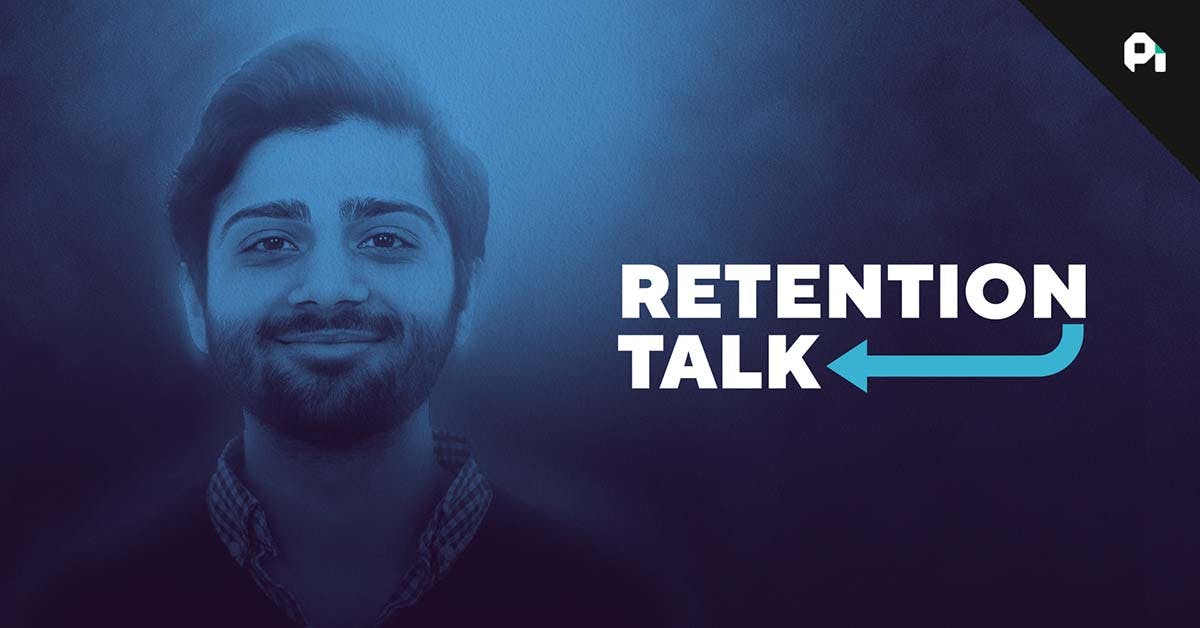
5 Key Strategies for User Retention
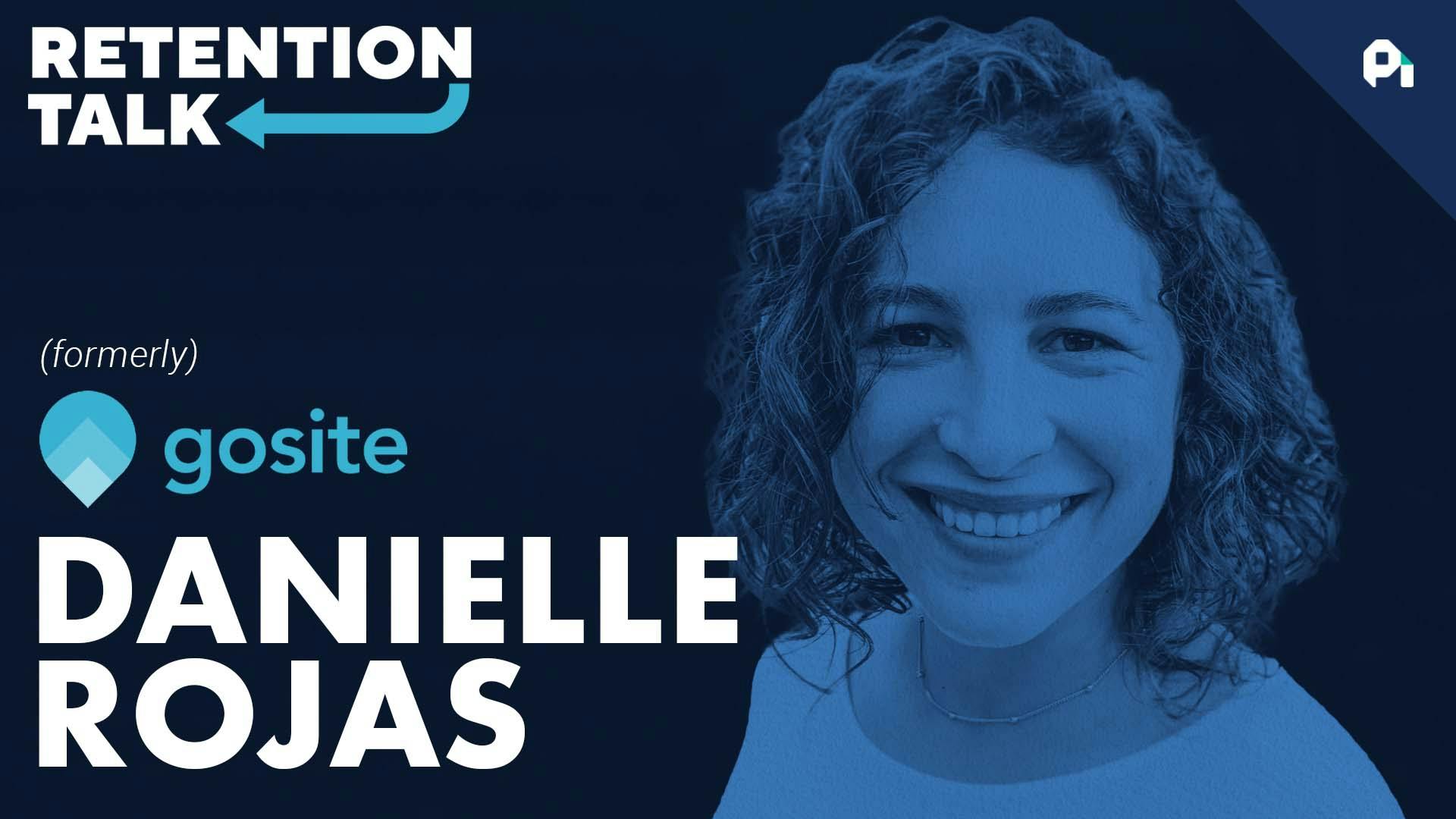
Voice of the customer, dunning strategy, and customer loyalty | GoSite's Danielle Rojas
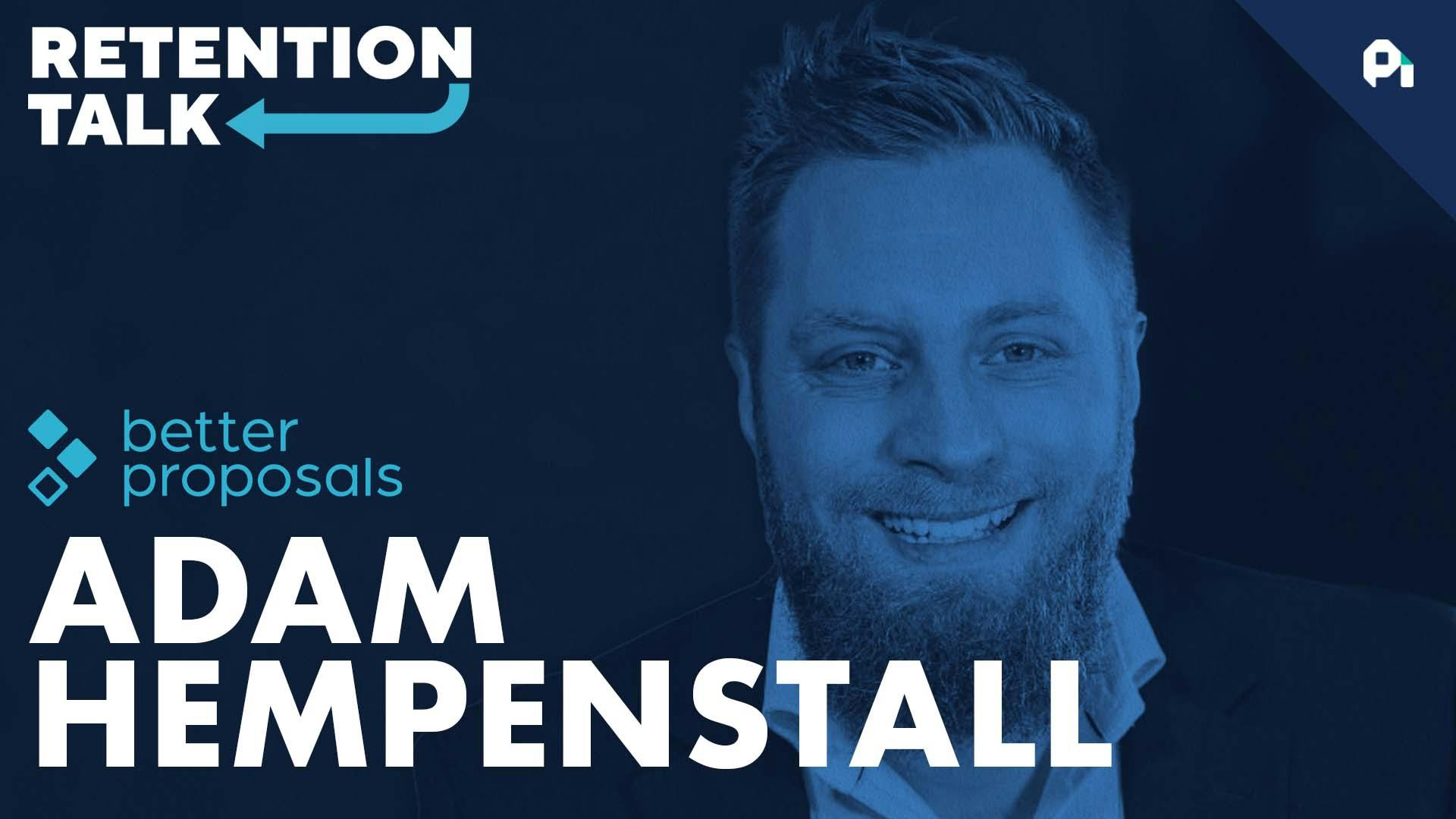
Overthinking, hacking retention, and rallying around metrics | Better Proposals' Adam Hempenstall
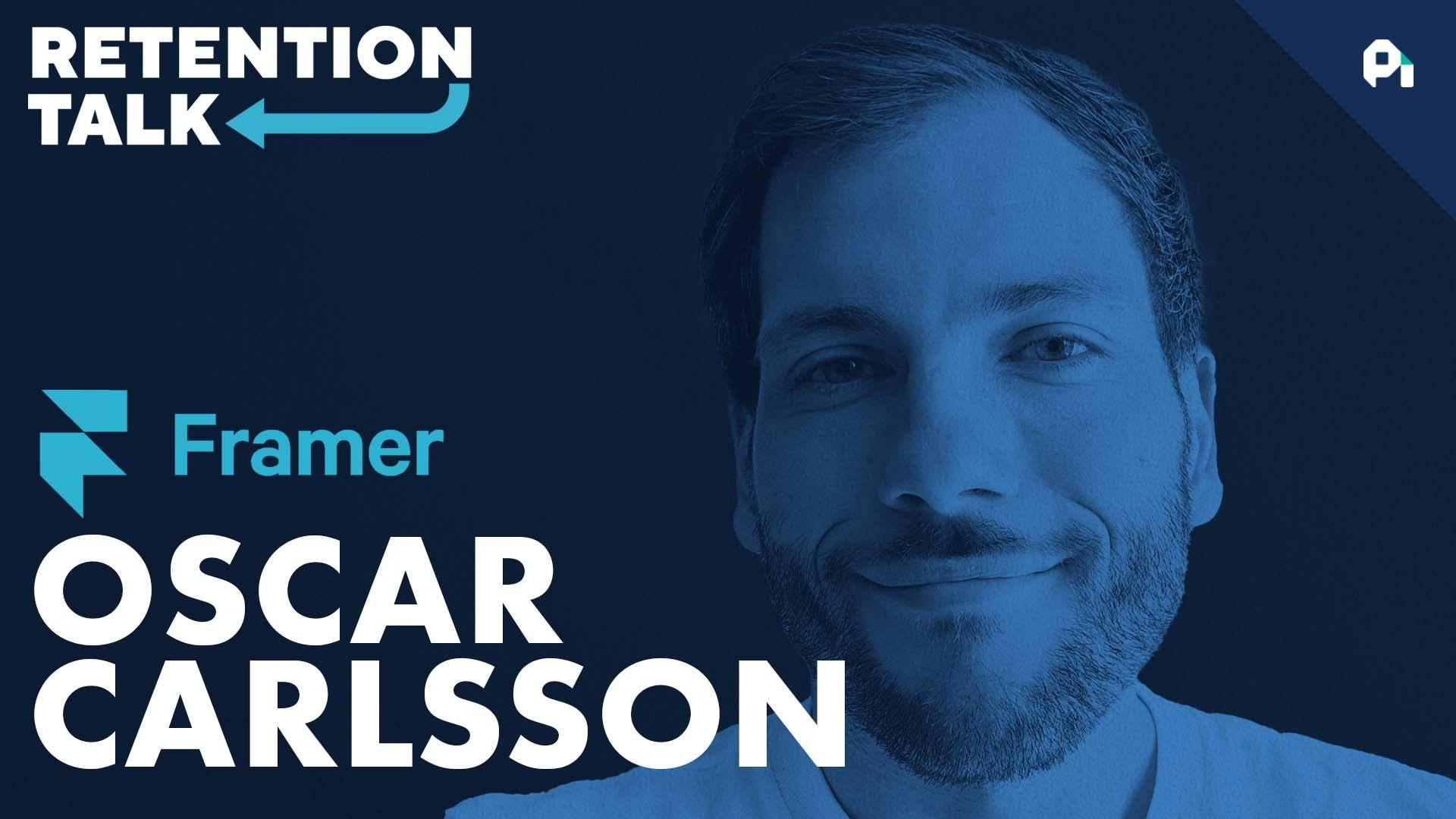
Product roadmaps, leveraging data, and defining churn goals | Framer’s Oscar Carlsson
